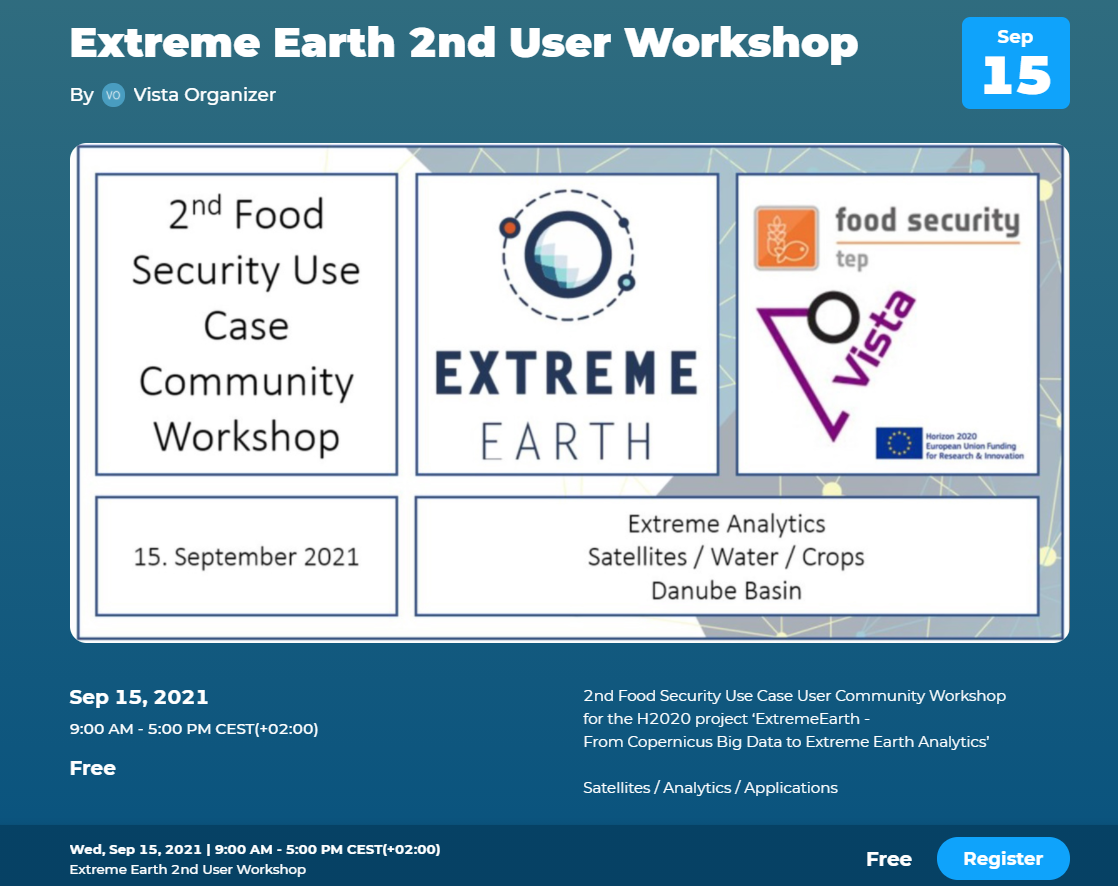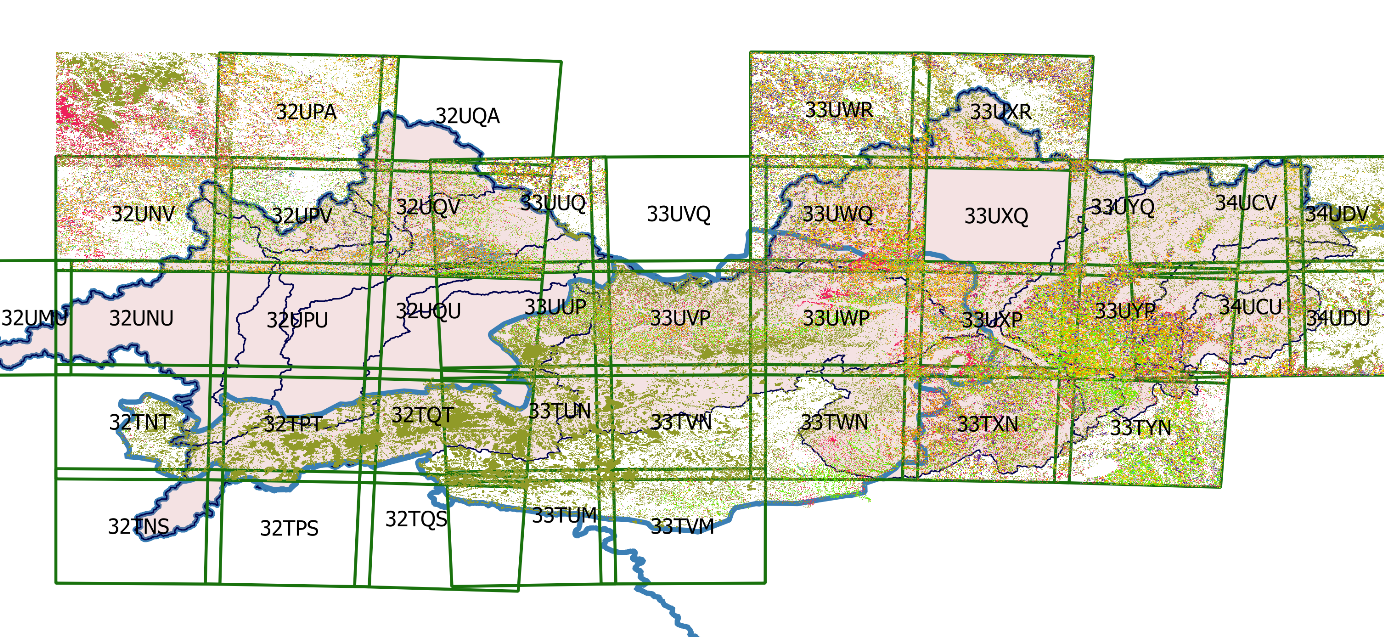Food Security TEP Newsletter - September 2021
Food Security TEP & H2020 project ExtremeEarth
‘From Copernicus Big Data to Extreme Earth Analytics’
workshop invitation
2nd Food Security Use Case Applications Workshop Danube
15. September 2021

The team of the Food Security Use Case of Extreme Earth would like to present and discuss what EO big data handling, extreme analytics, AI, linked open data procedures and land surface modeling, including the workflows to provide information in the context of Food Security and Agriculture.
The scope is:
- to give insight on achievements of generating information services for water management and agricultural irrigation applications, split in expert talks on
- Satellites and Crops
- Land Surface Processes
- Water and Irrigation Applications
- Rounds of discussion with the experts to receive feedback on the results: The team is interested users concerns and expectations in handling of seasonal variations and uncertainty of water resources, as well as challenges of current irrigation measures
Users who want to contribute by an active presentation on what is your situation and your challenges in the context of Crop Growth, Water Availability, Water Demand in agriculture and Irrigation – are very welcome.
You are open to forward this invitation also to your colleagues who might be interested.

More information and online registration (free of charge):
foodsecurity-extremeearth.vista-geo.de
If you have further questions, suggestions and feedback please contact the VISTA workshop organiser team: workshop@vista-geo.de
operations
The Food Security TEP is handling Sentinel-2 pre-processing for crop type mapping, to enable accurate information for agricultural applications. Based on VISTA’s algorithms, Bottom of Atmosphere and Leaf Area Information from a large time series of Sentinel-2 data, serve as input to sophisticated Deep Learning approaches (performed by the University of Trento) to receive precise crop type mapping.
Within the last weeks, a total number of > 3200 Sentinel-2 tiles for the sub-region of the Upper Danube, Austria and adjacent areas had been processed and will serve as input to training and classification of the crop situation of the years 2019 and 2020 of this area. Within this task, the Food Security TEP could also celebrate its 50.000 processed job!

The scalable approach of pre-processing, data handling and (upcoming on the TEP) classification will enable to work with the real big data of the entire Danube and Douro Catchment (and beyond) for the next period of the Extreme Earth project.
background
H2020 ExtremeEarth was established on developing techniques and software to enable the extraction of information and knowledge from big Copernicus data using deep learning techniques and extreme geospatial analytics. Within the project (2019-2021) two specific use cases had been followed: Food Security and Polar.
Driven by climate change, challenges in agriculture and regional water management, facing seasonal variations in crop growth and uncertainty of water resources, need better knowledge and information for decision making.
Within the last two years, the project team established and demonstrated several techniques on EO big data handling, extreme analytics, linked open data procedures and land surface modelling, including the workflows to provide Water Availability, Crop Growth and Water Demand information.
Those efforts target the measures on food security, especially regarding irrigation and cultivation planning. The project focused on the European Danube and the Douro River basins.
Project Webpage Extreme Earth http://earthanalytics.eu/
preview
The Food Security TEP will be part of the e-exhibition of the “Extreme AI Platform” at ESA Φ-week 2021, 11-15 October 2021. Here the Extreme Earth Partner VISTA, Logical Clocks and Polar View will present the Extreme Earth triggered developments of a platform for Data-Intensive AI with a Feature Store. The Extreme AI Platform is based on Hopsworks, that is providing an environment to create, reuse, share, and govern features for Enterprise AI, as well as manage the entire AI data lifecycle in the development and operation of machine learning models.


